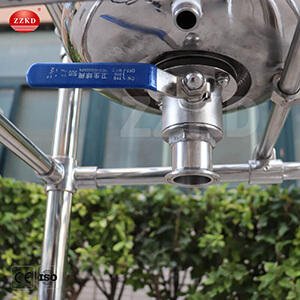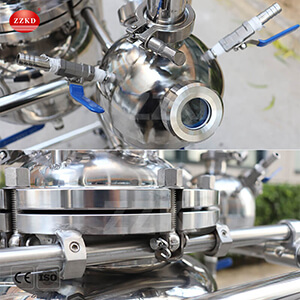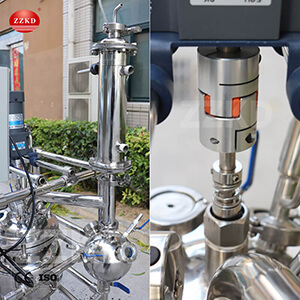How to Make Concentrated Syrup with Stainless Steel Reactor?
Have you ever wondered how Coca-Cola achieves its iconic, consistent flavor across millions of bottles produced daily? The secret lies in its concentrated syrup—a carefully crafted blend of ingredients that forms the backbone of the beverage. But behind this process is a piece of equipment that rarely gets the spotlight: the stainless steel reactor.
In this article, we’ll explore how Coca-Cola’s syrup is made, why stainless steel reactors are irreplaceable in food and beverage production, and what you should consider when choosing a reactor for your manufacturing needs. Whether you’re a beverage startup or an established brand, understanding the role of reactors like ours can help you optimize quality, safety, and efficiency.
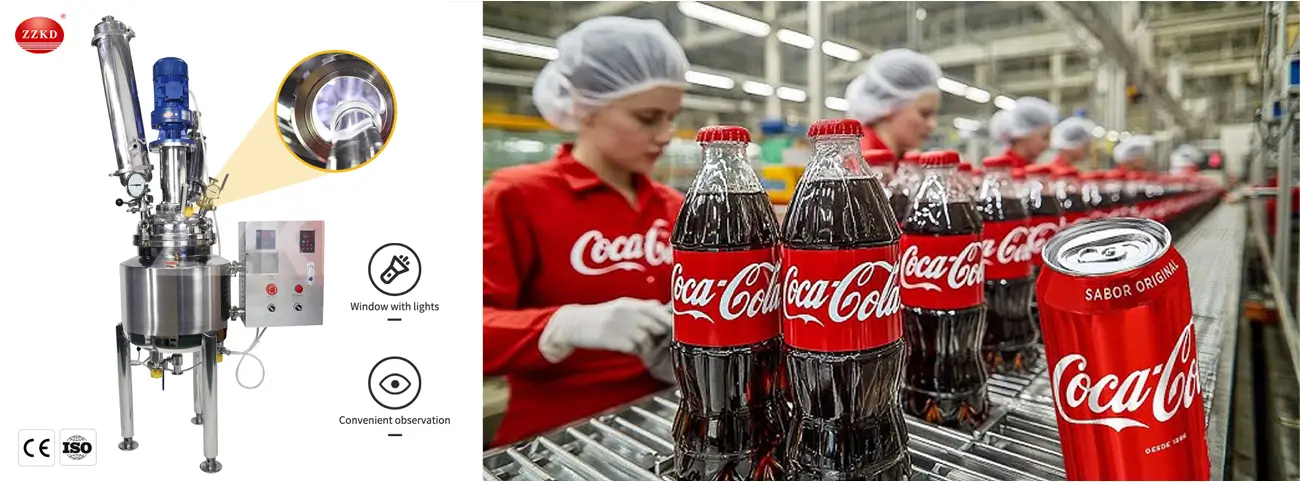
Part 1: How Coca-Cola’s Concentrated Syrup Is Made
Coca-Cola’s syrup production is a marvel of modern food engineering. Here’s a simplified breakdown:
Ingredient Mixing:
The syrup starts with a precise mix of sugar (or substitutes), water, caramel color, phosphoric acid, and natural flavors (including the infamous “Merchandise 7X” secret blend). These ingredients must be blended uniformly to ensure every sip tastes the same.Heating and Dissolving:
The mixture is heated to dissolve ingredients completely. Temperature control is critical here—too hot, and flavors degrade; too cool, and ingredients won’t integrate properly.Filtration and Purification:
The liquid is filtered to remove impurities, ensuring clarity and consistency.Cooling and Storage:
The syrup is rapidly cooled to prevent microbial growth and stored in sterile tanks before being shipped to bottling plants.
At every step, specialized equipment is required to handle sensitive ingredients, maintain hygiene, and scale production. This is where stainless steel reactors come into play.
Part 2: Why Stainless Steel Reactors Are the Heart of Syrup Production
Stainless steel reactors are the unsung heroes of food and beverage manufacturing. Let’s break down why they’re indispensable:
1. Hygiene and Safety First
Food-grade stainless steel (typically 304 or 316L) is non-porous, resistant to corrosion, and easy to clean. This prevents bacterial buildup and cross-contamination—critical for products like syrup, which have high sugar content and are prone to spoilage.
Did you know?
Coca-Cola’s quality standards require equipment that meets FDA and ISO certifications. Stainless steel reactors are the gold standard for complying with these regulations.
2. Temperature Control Precision
Syrup production involves heating and cooling phases. Stainless steel reactors excel at maintaining consistent temperatures thanks to their excellent thermal conductivity. Jacketed reactors, for example, use steam or coolant circulating around the vessel to control heat without direct contact with the product.
3. Durability for High-Volume Production
Stainless steel withstands frequent cleaning, high-pressure environments, and acidic ingredients (like phosphoric acid in Coca-Cola). This longevity reduces downtime and replacement costs.
4. Scalability
Whether producing 100 liters or 10,000 liters, stainless steel reactors can be customized in size and configuration. This flexibility supports startups and multinational brands alike.
Part 3: 5 Key Questions Manufacturers Ask About Stainless Steel Reactors
If you’re investing in a reactor for syrup, flavors, or other food products, here are answers to common concerns:
Q1: How do I know if a reactor is “food-grade”?
Look for:
Material: 304 or 316L stainless steel.
Surface Finish: A polished interior (Ra ≤ 0.8 μm) prevents residue buildup.
Certifications: FDA, ISO 9001, or EHEDG compliance.
Q2: Can reactors handle viscous liquids like syrup?
Yes! Opt for reactors with:
Agitators: High-torque mixers that prevent settling.
CIP (Clean-in-Place) Systems: Automated cleaning for sticky residues.
Q3: What’s the lifespan of a stainless steel reactor?
With proper maintenance, 15–20 years. Regular passivation (a process that restores corrosion resistance) extends longevity.
Q4: Are custom designs possible?
Absolutely. Need a reactor with extra ports for sensors? A specific heating method? Reputable manufacturers offer tailored solutions.
Q5: How do I balance cost and quality?
Avoid cheap reactors with thin walls or inferior welds. Prioritize:
Material thickness (≥2mm for small reactors).
Reputable suppliers with industry experience.
Part 4: Case—How Our Reactors Power Beverage Giants
While we can’t name clients due to NDAs, here’s how our reactors solve real-world challenges:
Challenge: A soft drink producer needed to scale syrup production without compromising flavor consistency.
Solution: We provided a 5,000L stainless steel reactor with:
Triple-layered agitators for even mixing.
PID temperature control (±1°C accuracy).
CIP system to reduce cleaning time by 40%.
Result: The client boosted output by 200% while passing FDA audits effortlessly.
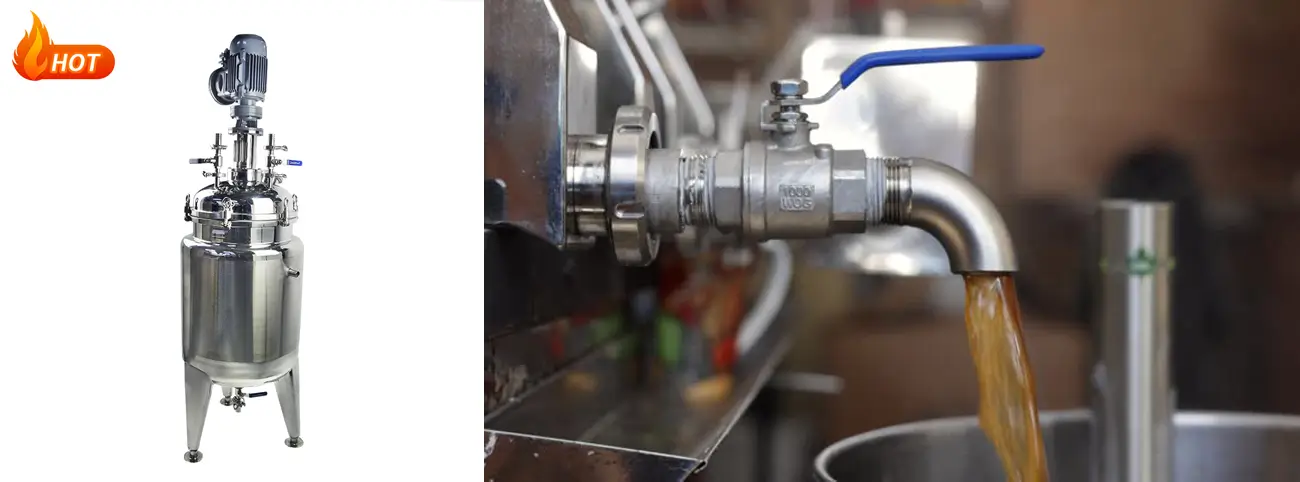
Part 5: Choosing the Right Reactor Supplier—What to Look For
Not all stainless steel reactors are created equal. Here’s a checklist for evaluating manufacturers:
Experience in Food/Beverage: Avoid generic suppliers. Look for expertise in hygienic design.
Customization Options: Can they adapt to your workflow?
After-Sales Support: Maintenance guides, spare parts, and technical assistance matter.
Transparent Pricing: Beware of hidden costs for installation or modifications.
Conclusion: Why Your Syrup Production Needs a Stainless Steel Reactor
From Coca-Cola’s secret syrup to your signature beverage, stainless steel reactors are the backbone of consistent, safe, and efficient production. By investing in high-quality equipment, you’re not just buying a machine—you’re safeguarding your brand’s reputation and future.
Ready to upgrade your production line?
As a leading stainless steel reactor manufacturer, we specialize in designing reactors that meet the toughest food safety standards. [Contact us] today for a free consultation—let’s craft the perfect solution for your needs.

